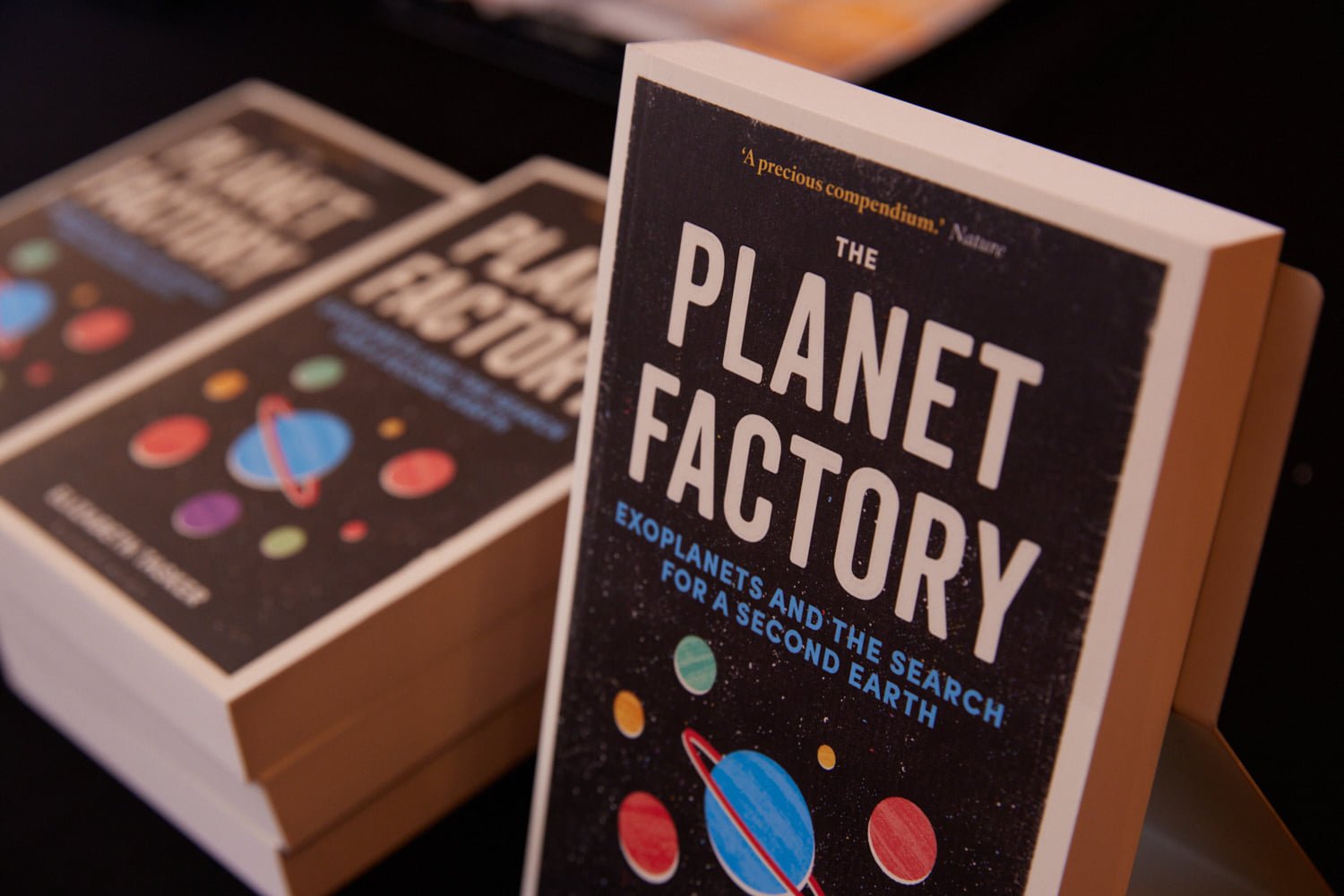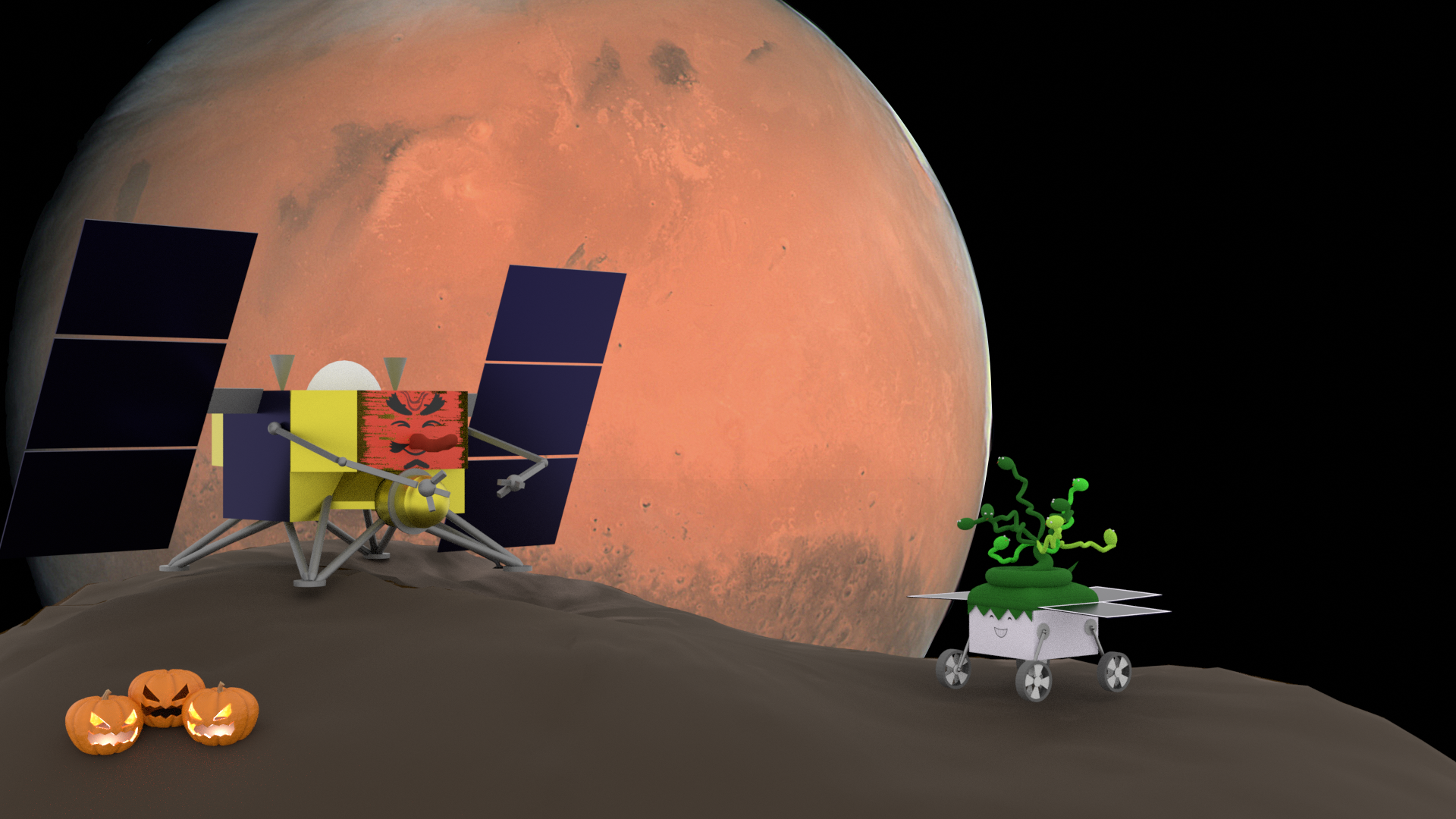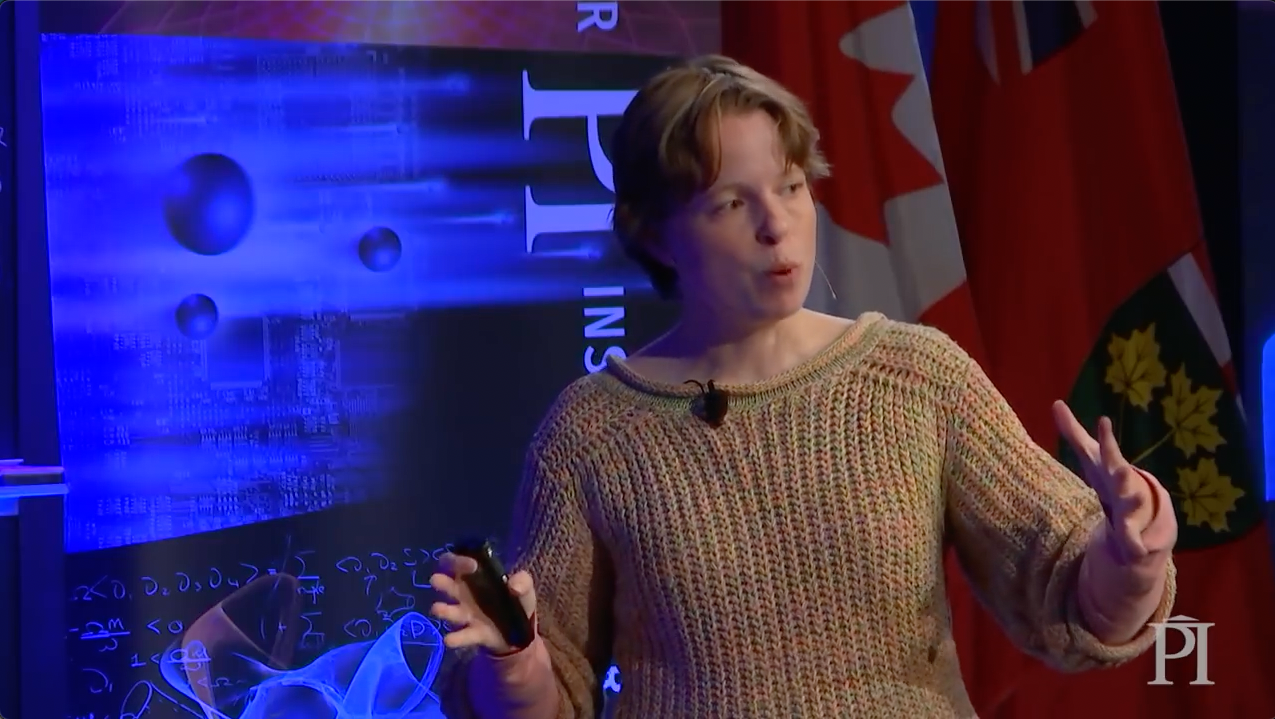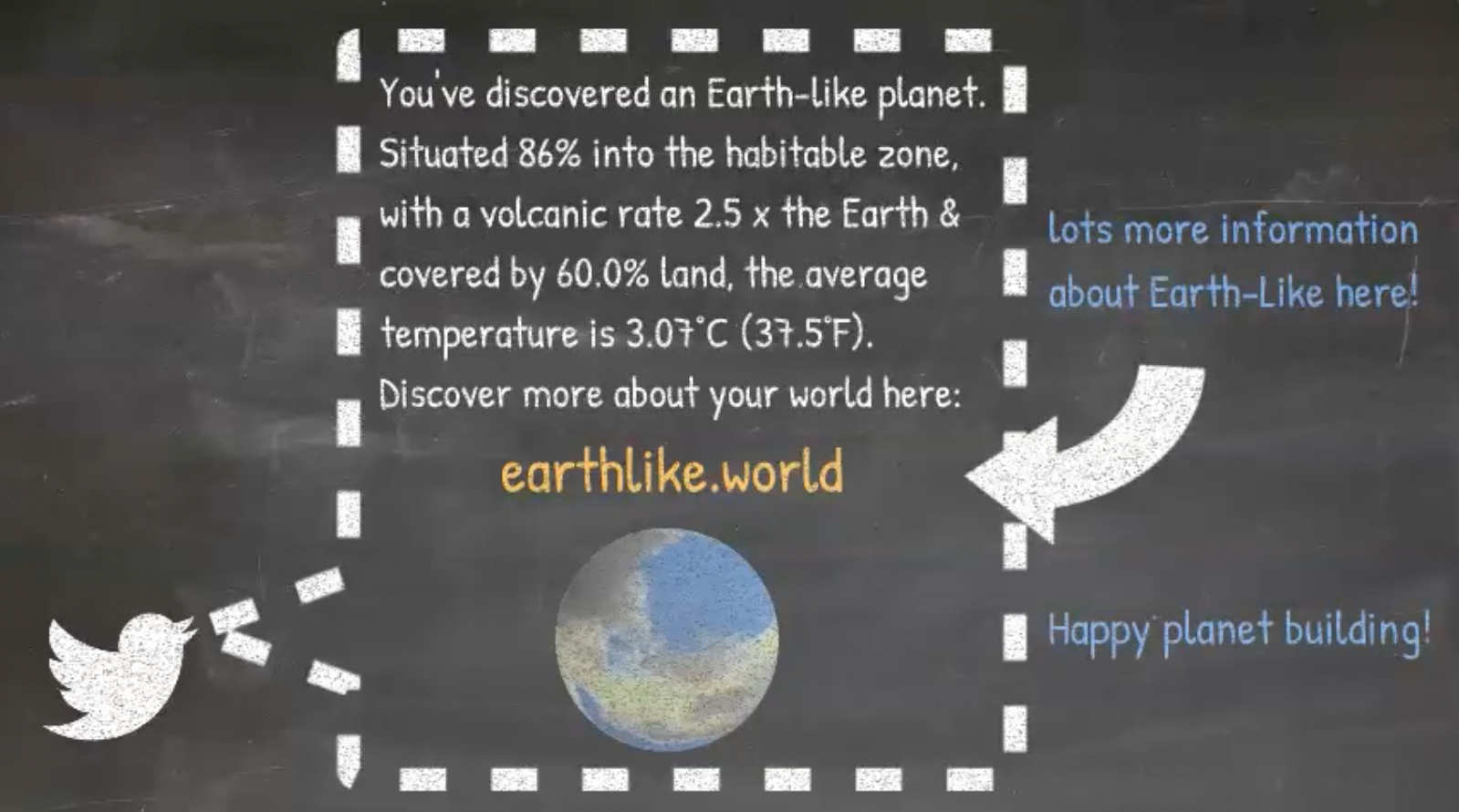
Science communication is explaining without being able to substitute a citation.
About
I’m an associate professor at the Japan Aerospace Exploration Agency (JAXA), Institute of Space and Astronautical Science (ISAS).
I’m on the outreach team at ISAS, where I founded and write the institute’s blog, Cosmos, and support the English translation of press releases and social media feeds. I also work with the international outreach for several space missions, including Hayabusa2, and I am the international outreach lead for the Martian Moons eXploration (MMX) mission.
In addition to writing, I develop visuals and videos including chalkboard explainers and simple CGI, because everyone should be able to say “whoa, neat!” even when doomscrolling.
My research looks at the formation of stars and planets using numerical simulations and machine learning, and also explores the use of virtual reality in creating unique online events.
My first popular science book ‘The Planet Factory’ (Bloomsbury) is out now, and I am the lead editor and one of the authors on the textbook, ‘Planetary Diversity’ (AAS/IOP).
I’ve written many articles for the media, given talks around the world, and spoken on podcasts and radio, usually about exoplanets and our Solar System. Sometimes about cat rescue.
An exciting selection of articles by me can also be found on my blog site.
I made a short FAQ about working and living in Japan, populated by common questions.

Books
The Planet Factory
Exoplanets and the search for a second Earth
By Elizabeth Tasker
How weird are worlds around other stars? Weird. Really weird.
Super-sized Jupiters orbit their stars closer than Mercury, while Earth-sized worlds have years lasting mere hours and crusts of molten magma. Other planets are on bent orbits where the seasons change the weather by a 1000 degrees, while around a neighbouring star circle split worlds with hemispheres of everlasting day and perpetual, neverending night.
Praise for “The Planet Factory”
“Elizabeth Tasker's book is a surprisingly complete description of the current state of astronomy of extrasolar planets, presented in a way that is extremely entertaining and accessible. I highly recommend it to everyone who would like to get acquainted with this still-new, fascinating field of science.” – Aleksander Wolszczan, discoverer of the first exoplanet
“A precious compendium on what we can say about the formation of planets, and how much our knowledge has progressed in recent years.” – Nature Astronomy
“Tasker brings a refreshingly international perspective to the story of this pursuit [hunting for planets], reminding us that the question of whether or not we are alone is one pondered by Earthlings everywhere.” — Science Magazine
“Brilliantly written ... Tasker highlights how difficult the hunt for planets is. I highly recommend this book.” – Physics World
“Tasker offers easy analogies by the handful, and while at first they may seem too easy, you’ll appreciate them by the time you’re trying to understand the optimum timing of planetary migration.” — NPR
“If you've always been intrigued by extrasolar planets - or even if you haven't! - you'll want to move this book to the top of your reading list.” – Sky & Telescope
Planetary Diversity
Rocky planet processes and their observational signatures
Edited by Elizabeth J Tasker, Cayman Unterborn, Matthieu Laneuville, Yuka Fujii, Steven J Desch, Hilairy E Hartnett
We’re never going to find an exact replica of the Earth. But what if we found something close?
Perhaps a rocky planet with more water? A slightly different composition? Or a crust that forms a static lid rather than the Earth’s plate tectonics? Looking at our own Solar System and the stars in our Galaxy, what diversity do we expect and how might this impact the planet?
This is an interdisciplinary text aimed at researchers (primarily graduate students and above) focussing on the characterisation of extrasolar planets. The book explores the effect of varying four different properties of the Earth—volatile abundance, composition, the planetary magnetic field and the heat budget—and asks what changes to the planet do we expect, drawing on examples from the Earth, the planets of our Solar System and exoplanet systems.
The first chapter of the book on exoplanet observations can be downloaded for free on the IOP website.
Contributed chapters
Sample Return Missions
The Last Frontier of Solar System Exploration
Chapter 10: Future Missions
by Elizabeth Tasker and Jonathan Lunine
Hayabusa2 Asteroid Sample Return Mission
Technological Innovation and Advances
Chapter 26: Public relations and outreach from the Hayabusa2 project
by Makoto Yoshikawa, Elizabeth Tasker et al.

Science communication
The aspect of science communication that I enjoy the most is the diversity. Writing an in-depth article where you can really lay out a topic is a fabulous foundation, but even the most avid reader cannot absorb a detailed feature piece while standing on a crowded train, or in the 5 minute window queuing for a coffee.
And there’s so many ways you can share an idea. Maybe it’s a talk to an audience, or a bite-sized tweet (or toot), a chalkboard explainer video, or an animation or computer game. You can discover something new that made you laugh unexpectedly, and spit out your coffee.
Writing
At ISAS, I developed the Cosmos blog as a way of ensuring we had detailed descriptions in English on our missions and activities. These articles have the space to layout the background and describe new concepts in detail, and are designed both as an introduction to a topic and a reference. I’ve also written extensively directly for the media, including for Scientific American, Astronomy Magazine, space.com, and as a feature writer for the NASA NExSS blog for extrasolar planets, Many Worlds. Examples of my writing can be found on my blog site.
Chalkboards
In a chalkboard video, you can watch an idea gradually take shape with simple illustrations that appear as if they are being drawn on a chalkboard or whiteboard. I find them quite addictive to watch, especially when spotted on social media. I’ve designed chalkboard explainer videos for summarising journal papers (both my own and for ISAS), and science ideas behind for the Martian Moons eXploration mission. I’ve been using the software “doodly” for this, drawing the images I need with Keynote’s vector drawing tools (planets being round helps a lot!). A collection of the chalkboards I’ve put together are on my YouTube channel here.
CGI
Computer graphics can be extremely eye-catching, and often grab attention to a social media post. I’ve been learning Blender (3d animation software) to design introduction graphics to go with tweets linking to longer Cosmos articles, and also to develop a little cartoon series for the Martian Moons eXploration mission (inspired by the ESA series for the Rosetta mission). The cartoons are primarily fun, but also contain information about the mission or the team. For example, in the image above, the MMX spacecraft and the rover are dressed as a Tengu and Orochi for Halloween. These are two Japanese mythological creatures, but also the name of two instruments onboard the mission. Our cartoons can be found on the MMX twitter, and also collected together here.
I admit that I’ve found learning Blender quite tricky, but the results make me feel I could produce the next Pixar (if the next Pixar was no longer than a minute).
Virtual
I’ve also given talks in, and assisted in the development of, virtual reality spaces, working with The Future of Meetings team and the Metavisionaries Academy. I feel virtual space have a huge potential for exploring and communicating science.
Annnd… I’m a fictional character in the YA book ‘The Center of the Universe’ by Ria Voros (truthfully, unsure where to fit that statement in, but I felt it really should go somewhere!).

Speaking
Speaker Reel of talks, discussions and panels. Details of the presentations and links to the full talk can be found on my [YouTube channel here].
Talk topics: exoplanet diversity, planet formation & the habitable zone.
I’ve given many public talks on exoplanet formation, our own Solar System, and the habitable zone, including at the Royal Institute in London, European AstroFest, the Perimeter Institute in Waterloo, TEDxHokkaidoU, and the American Museum of Natural History Frontiers Lecture in New York. I’ve also talked on podcasts, vodcasts, and radio, in-person and virtual. I did keep a complete list, but it’s now got a bit unwieldy. However, there’s a number of my recorded talks on my YouTube channel.

Research
My background is in hydrodynamical simulations of star and galaxy formation, but more recently, I have been exploring the diversity of planets using machine learning.
One project I particularly enjoyed was developing a simple carbon-cycle model that could be run in a web browser and previously via twitter (see video above). The user specifies the land fraction, volcanism rate (with respect to Earth today) and the location within the habitable zone. An average temperature for the planet is estimated by exchanging carbon between air, sea and land based on those parameters. A neural network then creates a realisation of what that planet might look like.
While very simple, ‘Earth-like’ allows anyone to explore how even tiny changes to the Earth can produce huge diversity. The actual diversity amongst exoplanets with far more differences in their properties is therefore likely to surpass anything from science fiction.
I have an orcid number. And a CV.

Contact
Want to talk planets? (Working for a government institute, I cannot always respond directly to press and media inquiries: it may be necessary to initially go through JAXA PR. This is usually possible, but can take a little more time. But I’ll help with any inquiries if I can!)
